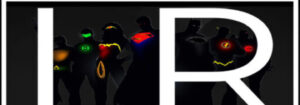Q1. Dr. Narain, it’s wonderful to have you with us for this Q&A. You are a medical doctor as well as a fiction writer. How do you manage to balance both these fields?
Hi Nisar. Thanks for featuring me as the Author of the Month on Literary Retreat. I really appreciate this gesture. To answer your question—yes, I am a medical doctor and a plastic surgeon at a government teaching institution. So, besides having an active clinical practice, I also teach and train medical students and plastic surgery trainee residents.
No, I do not write fiction—well not fiction in its true sense, actually. My field of interest is Indian mythology or legends, whatever term one may prefer. So, although they are stories, these stories are derived from Indian historical scriptures.
As far as balancing work and my writing is concerned, I do not have a private practice, so once I am free from the college, I devote my time to reading and writing. Evening is the family reading time at my home. All of us do our respective academic work during this period. This is when I do most of my reading or writing.
Q2. What were the inspirations behind writing The Battle of Panchavati (2019)?
The book, The Battle of Panchavati, is a collection of seven immortal stories from Indian mythology. Before I actually sat down to write the book, I used to pen down the stories reverberating in my mind, in my blog. The first few stories I wrote received considerable acclaim from friends and casual readers alike. This was when the idea of a formal book took root in my mind. The stories in the book are the ones which most of the Indians would have either heard or read or seen in plays or on TV. These stories are the very lifeblood of Indian mythology. It is the stories themselves, and the characters in them, which forced me to pen their tales down and publish the book. The characters live in my mind, they speak to me and it is they who have inspired me to write the book.
Q3. Which writers have influenced your storytelling the most?
That is an easy one. Amish Tripathi is easily the biggest star on the Indian storytelling horizon and has been acclaimed as the first Rockstarof Indian mythology writing. However, Amish’s books are purely fiction, though inspired by the actual text. His style and pace, however, are gripping. On the other hand, I have found Bibek Debroy’s translations to be lucid, erudite and extremely satisfying to someone who is beginning to find his way through the maze of Indian mythology. I try to find a middle ground between these two veterans.
Q4. Any advice for aspiring authors?
Well, first off, one has to ask oneself—do I like telling stories? Can I make them interesting, colorful, gripping, and easy to read? And finally, what sort of stories do I want to tell? What am I most passionate about? What do I myself like to read? Fiction? Sports? History? Films? Espionage? Once you find an answer to this, you have found your genre!
Q5. What are your hobbies besides reading and writing?
Well, I do listen to music frequently and also watch a lot of movies. Both of these give me the creative input, the impulse, the churning of emotions which are so necessary to be able to tell a story.
Q6. Tell us about your upcoming projects.
I am working on a couple of projects currently—of which at least one would be a story book for children. Another project of mine is making Indian mythological texts easy and interesting to read for the lay public, without taking away their actual message or altering their spirit.
Visit Dr Narain’s Amazon Author Page here.
Browse through Dr Narain’s blog here.
Check out Dr Narain’s Facebook page here.


